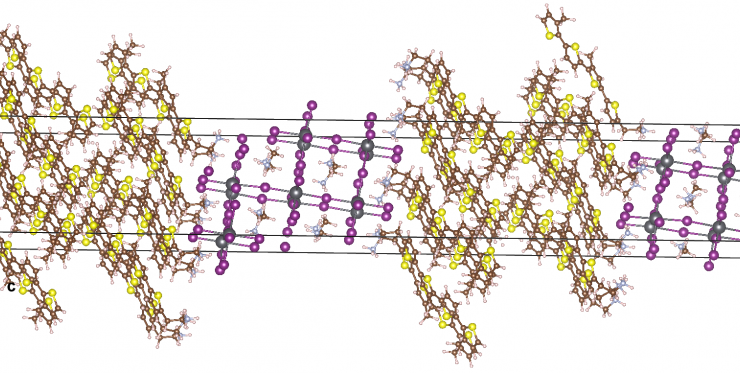Investigators at Duke University and Purdue University have demonstrated that by limiting the arrangement of multiple inorganic and organic layers within crystals using a novel technique, they can regulate the energy levels of electrons and holes (positive charge carriers) within a class of materials known as perovskites.

Image Credit: Duke University
This tuning affects the materials’ optoelectronic properties and capacity to emit light of specific energies, as illustrated by their ability to function as a laser source.
The study results from a close partnership between experimental and theoretical teams. The experimental teams synthesized and characterized the materials, while the theoretical team used computational simulations to anticipate the electronic structure and properties of the materials. The study was published on August 31st, 2023, in the journal Nature Chemistry.
A long-standing investment in developing computational simulation codes for material properties is an important foundation of the computational work.
We’ve invested almost 20 years into being able to make these kinds of calculations in larger systems. This study involved simulating structures including up to around 900 atoms with an advanced methodology, which requires powerful supercomputers that can handle some of the largest calculations on the planet.
Volker Blum, Associate Professor, Mechanical Engineering and Materials Science, Duke University
Perovskite materials are a group of compounds that have received considerable attention in the field of materials science because of their exceptional features, especially in the field of semiconductors. Light-emitting diodes (LEDs), solar cells, and lasers can all benefit from these materials, which have a specific crystalline structure.
The research aims to improve the structural control of layered perovskite materials containing organic semiconductors. While these types of perovskites have previously been created using single layers of organic and inorganic components (including pioneering research by David B. Mitzi, who is now a Duke professor), the possibility to accurately regulate the thickness of the inorganic component and thus modify the material’s properties has remained unknown for these more complex “organic semiconductor incorporated perovskites.”
The organic components incorporated into the inorganic layers impact semiconductor properties like energy levels and light emission. The investigators tweaked the optical and electronic properties of the resulting material by carefully controlling the arrangement of atoms and the number of layers in these structures.
The study also addresses the difficulties in synthesizing these materials, such as the need to mix various components that may not dissolve easily in the same solvent, like mixing oil and salt into water. In larger structures, attaining accurate layering and alignment becomes more difficult.
It’s like taking salt and olive oil and trying to mix it into water. One dissolves and the other does not. And if you try to use gasoline instead of water, you end up with the same problem. Our collaborators were able to find a way to get both into solution and dry into ordered crystals, and we were able to model those crystals to help explain how they function.
Volker Blum, Associate Professor, Mechanical Engineering and Materials Science, Duke University
The overall effort to synthesize and characterize these layered perovskite structures was led by Letian Dou, the Charles Davidson Associate Professor of Chemical Engineering at Purdue University, while Blum spearheaded the effort to computationally simulate and characterize these materials.
The research was funded by the National Science Foundation (2110706-DMR, DMR-1729297, CHE 1625543), the Department of Energy (DE-SC0022082, DE-AC02-05CH11231, DE-AC02-05CH11231), and the New Cornerstone Science Foundation.
Journal Reference:
Park, J. Y., et al. (2023). Thickness control of organic semiconductor-incorporated perovskites. Nature Chemistry. doi.org/10.1038/s41557-023-01311-0.